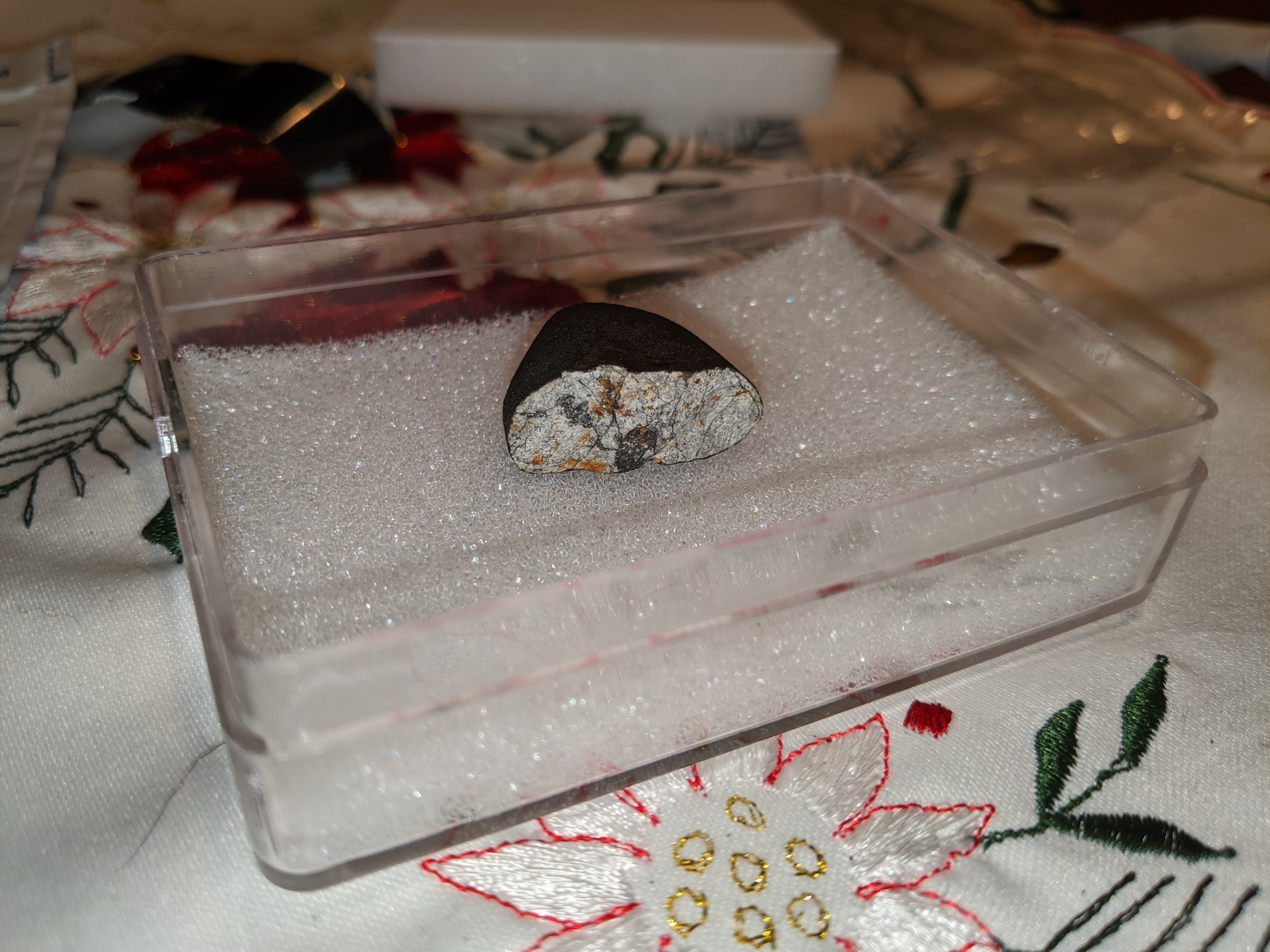Metal rich asteroids form in larger asteroids which could be described as small plamets. At their formation they heated up to several thousand degrees. Radioactive decay heated them further up, which melted their interior. Heavy elements sunk to center. Similar to Earth with a metal rich core. Intact objects of this size are Vesta, Psyche and Ceres for example.
Oh please... jnr... you can describe them as chocolate sundaes if you want... even the biggest asteroid is not a planet... most of them are not even round.
Why do you think their formation heated them up?
Kinetic heat doesn't last very long and they don't have enough mass to conform to a spherical shape let alone the mass to have a melted core.
Our moon is enormous compared with any Asteroid and it is solid to the core because a hot core requires mass... the bigger an object the more mass it has... once it gets beyond a certain mass then gravity shapes it and forces it to become round... once it is big enough to become round the bigger you make it the longer its core will remain hot after it is created and the bigger it is the longer it will keep its molten core... it is all about surface area... smaller mass objects radiate heat faster so their cores cool down much faster too.
Since they are several hundred km big the internal cooling took many million years.
Ah bullshit... unless it is orbiting a massive object like Jupiter or Saturn in an eliptical orbit where tidal forces stretch and crush it creating friction and therefore also heat an object in space will cool fairly rapidly... a rock much smaller than a moon even faster.
Now constant collissions broke some objects up, which is tje scource of 90% of the meteorites we find on earth.
Why would constant collisions be necessary to make small meteorites?
Even quite large meteors explode on reentry and become small meteorites. Collisions in space would be relatively rare... the distance between asteroids in the Asteroid belt is enormous... standing on one you probably would see any others... they are relatively small and too far apart.
The Cheliyabinsk meteor for example was once material that formed inside a very large object and was formed in several km deep.
Oh please... what high school did it go to and what was the name of the first girl it kissed?
Gary with all due respect, but thats basic astronomy in french schools in 10th grade. What do you guys learn in New Zealand?
Perhaps that is why there are so many French Astronomy experts...
As for entry of earth atmosphere. Only a very thin layer gets heated in the way through the atmosphere. Its simply too quick. The so called fusion crust never exceed 2 or 3 mm.
WOW... thanks for that explanation because I clearly didn't know that... my example of using a blow torch for a few seconds on a frozen turkey was way off... NOT.
Im always happy ro lecture people from less fortunate countries, which cant afford high education.
Yeah, that will help you win friends and impress girls... BTW which University did you attend...
Dear god...i hate to teach elderly people...bigger rocks dont explode by the heat but because the aerodynamic forces. The rapid deccelartion starts to frakture the object by its way through atmosphere.
And of course a genius like you understands that not every object entering the earths atmosphere is solid or rock... the object that exploded over Tunguska in 1908 was likely an iceball comet type object that shattered more than a dozen kms from the ground... when I say shattered I mean over 2,000 square kms of forest flattened and a glow in the night sky as far away as London... but no crater.
Your link says exactly what i said. Aerodynamic forces, not heat breaks them apart.
Well not really.... you make it sound like they all explode and all that ever hits the ground is little pieces... there are enough enormous craters still visible on earth to prove that to be wrong.



 Isos
Isos
